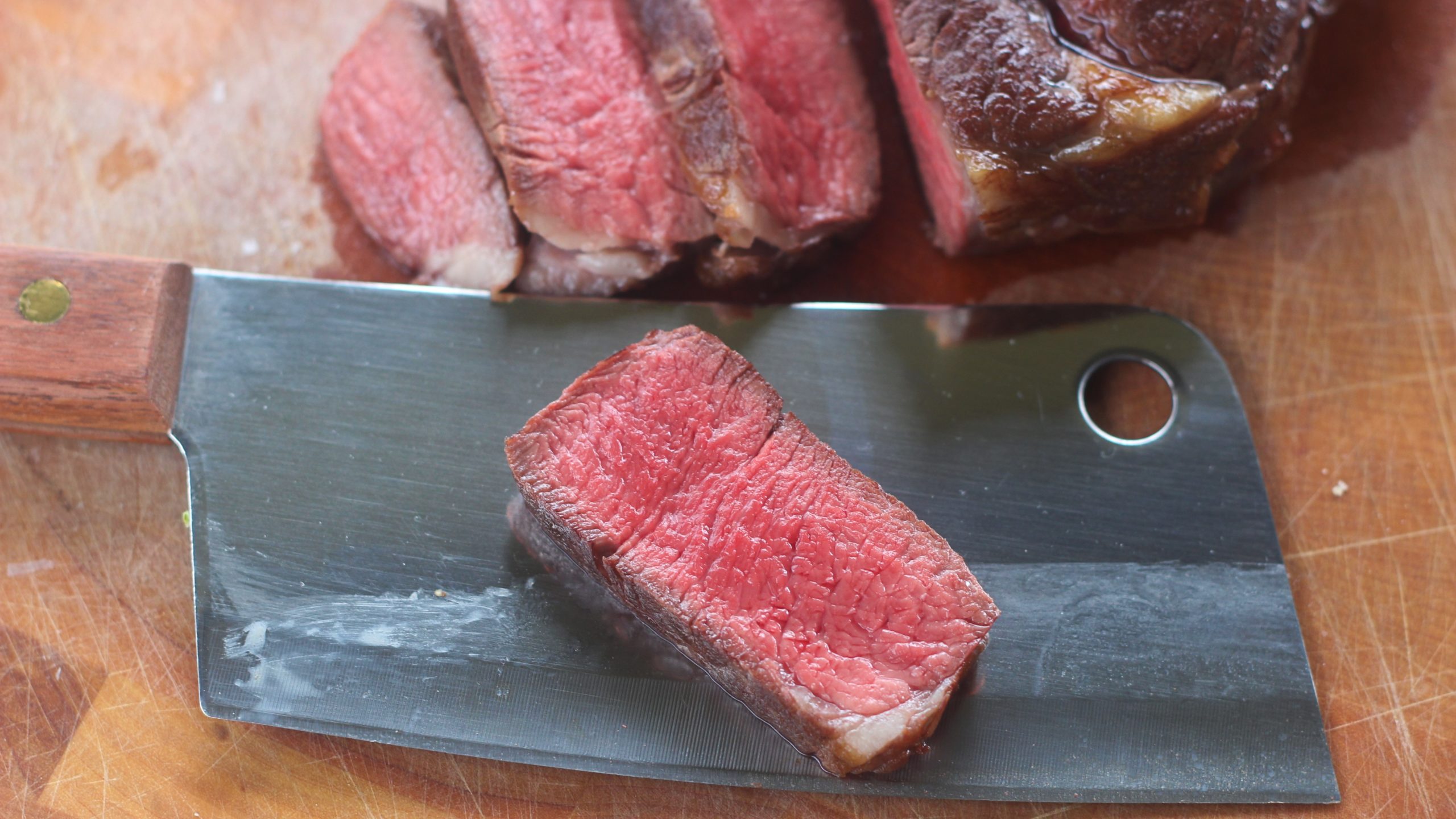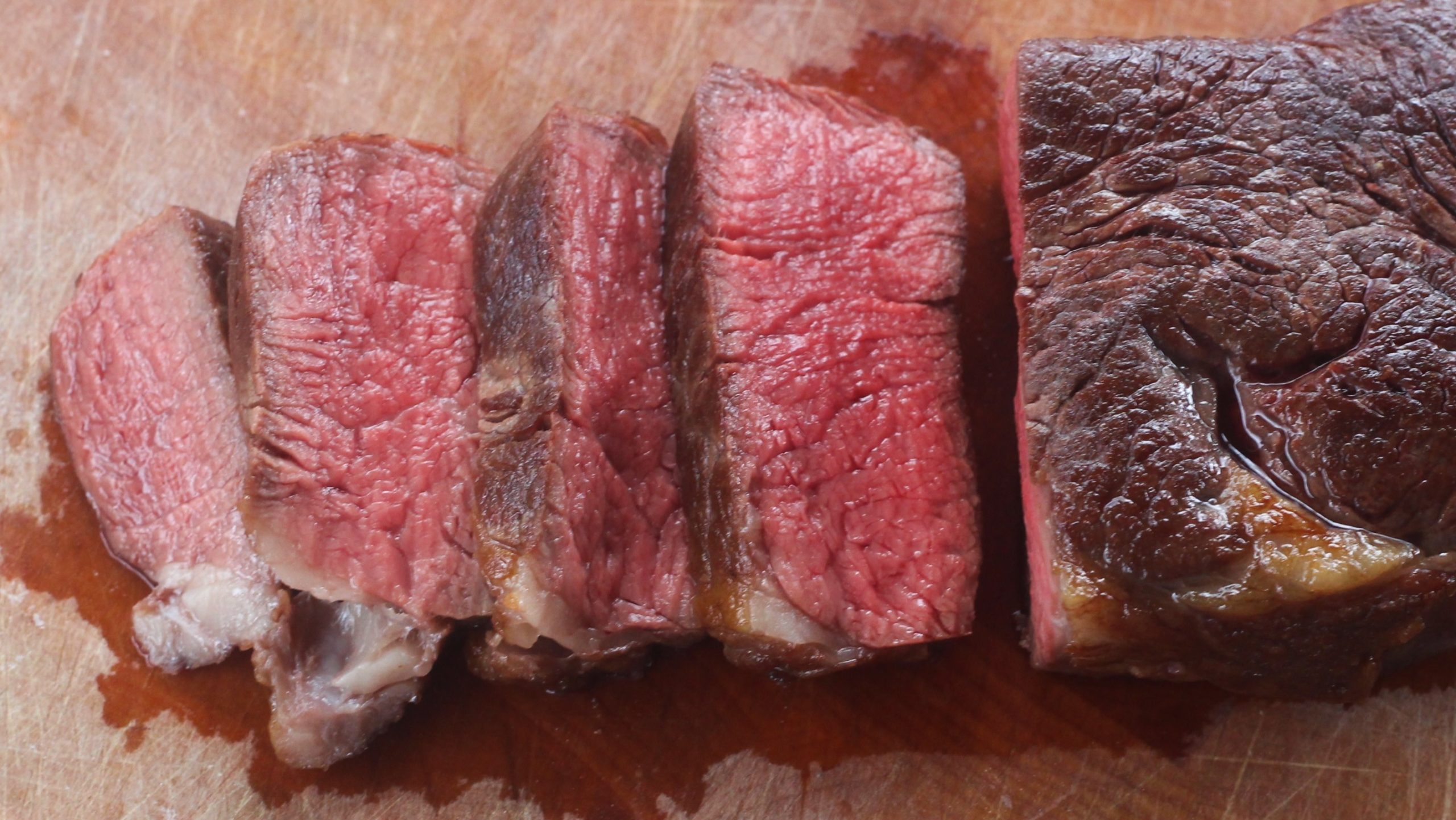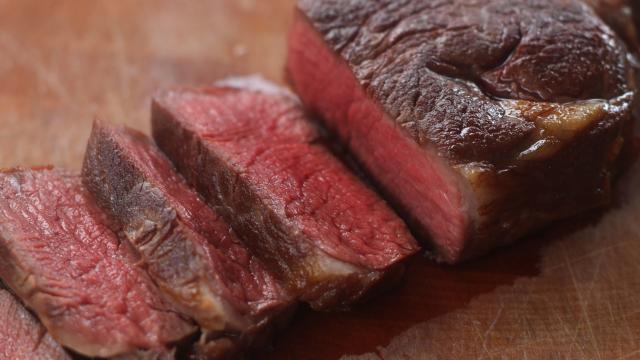When it comes to steaks, I have a history of focusing too much on the ribeye. I love fat and meat that comes attached to bones, but dedication to a single cut is limiting, both as an enjoyer of steaks and a food writer. This well-marbled passion of mine has denied me the pleasures of thicker, leaner, but still very tender steaks, such as the filet mignon or any other tenderloin steak. (All filet mignon is from the tenderloin, but not all tenderloin steaks are filet mignon.)
A perfectly-cooked, barely medium-rare filet mignon is the epitome of 90s fine dining decadence, and there’s good reason for that: It’s extremely tender, with a pure, mild but meaty flavour. It tastes like steak, and nothing else.
[referenced id=”1049195″ url=”https://www.lifehacker.com.au/2021/03/pork-tenderloin-is-the-perfect-pork-for-beginners/” thumb=”https://www.gizmodo.com.au/wp-content/uploads/sites/4/2021/03/02/yszalhwk01otymqzpmu8-300×169.jpg” title=”Pork Tenderloin Is the Perfect Pork for Beginners” excerpt=”When it comes to main course proteins that “everyone” should know how to cook, the roasted chicken might be the most popular, at least in the United States. It is not, however, the easiest meat to master, nor is it even my favourite (though I do love this labneh-marinated bird)….”]
A cow is a big animal, with lots of variation throughout its body, and these variations have to be considered when you cook a steak. Marbled fat acts as a kind of safety net, keeping things moist and supple when the steak is exposed to heat, and a filet mignon has little of that intramuscular fat. The filet mignon is cut from the tenderloin, a non-weight bearing muscle that doesn’t move around very much; like my abs, this lack of exertion is what keeps the ‘loin so tender, but overdoing it with the heat can wreck the spoils of inactivity.
Similar to my favourite piece of pork, a gentle, low-temperature approach is what works best. Yes, you can ‘sous vide’ them, and there are many extensive guides on how to do so — so I’m not going to cover that here — but you can get excellent, extremely even results with using only your oven and stove.

That’s right, I am once again extolling the virtues of “reverse searing,” aka low-temp roasting followed by a very quick flash in the pan. The only special equipment you’ll need is an instant read thermometer, but every single person who cooks and eats meat should own one of those anyway. You’ll want to take your steak out of the oven when it’s 15 degrees shy of your target temperature. Since you don’t need any extra heat to break down any marbled fat, I recommend aiming for the rarer side of medium-rare — around 55 degrees Celsius.
You’ll also need a simple sheet pan and a frying pan that can handle high-heat, like stainless steel or cast iron (not nonstick). I use stainless steel because it takes about five minutes to get scorching hot on my electric range, and that’s the exact amount of time I like to rest my steak between the oven and the stove. (If you want to use cast iron, start heating it up a bit earlier.)
Not all tenderloin steaks are filet mignon, but this cooking method works well for any thick, lean steak that comes from a portion of the cow that doesn’t see a lot of activity. If you’re unsure if your steak fits these parameters, ask the person working your local meat counter — they will know, and will be happy to share their knowledge. To cook your own super tender, thick steak, you will need:
- 1 filet mignon or other tenderloin steak
- Salt
- About a teaspoon of a neutral oil with a high smoke point (vegetable or canola will work just fine)
- Optional: 1/2 cup of red wine
- Optional: 2 tablespoons of butter
Take your steak out of the fridge, generously salt all sides of it, and set it on a baking sheet or other shallow roasting pan. Set your oven to 95 degrees Celsius. Once the oven reaches that temp, set the baking sheet with the steak on the centre rack and roast for 10 minutes. Take a temperature reading with your instant read thermometer (just to have an idea of how fast things are heating up), flip the steak, and roast for another 7-10 minutes, until the centre of the steak reaches a temperature that is 15 degrees shy of your desired cooking temperature. (Start checking five minutes after the flip if you’re nervous.)
I like mine on the rare side of medium-rare, so I take my steaks out of the oven once they reach 45 degrees Celsius. Remove the steak from the oven, and let it rest while you heat up your pan (about five minutes).
Drizzle about a teaspoon of neutral oil in your pan, wipe out the excess with a paper towel, and heat the pan over very high heat until the oil starts to smoke. Sear the steak on all sides, including the edges, flipping it every 30 seconds until you have a nice crust all over. If the steak doesn’t release when you go to flip it, let it cook a little longer — it will release once a crust is formed. Move the steak to a plate, and let it rest for at least five minutes. You can use this time to make a simple pan sauce, if you so desire.

Move your pan off the heat, add the wine, and scrape up any browned bits with a wooden spoon. Let the wine reduce by about half (you may have to put the pan back on the burner), then add your butter and whisk to combine. Serve with your beautifully cooked, tender steak, preferably alongside a baked potato with chives (for the full 90s steakhouse experience).

Leave a Reply
You must be logged in to post a comment.